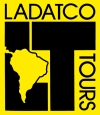

Destinations
Experiences
 |
L A
D A T C O T O U R
S |
 |
||||||||
| HOME | South America | Falkland Islands | Antarctica | Unique Destinations |
Unique Experiences |
Newsstand | ||||
 Colonial building with wooden balconies |
About Lima |
Lima, named the "City of the Kings" by the Spanish Conquistadores, is the main gateway into Peru and the country's capital city. Founded by Spanish Conquistador Francisco Pizarro in 1535, the city's first inhabitants numbered less than 100. Pizarro originally made his capital at Jauja, in the Andes. The change to Lima was a strategic one caused by the need to be close to his ships.
Although Lima's beginnings were modest, it continued to grow and became the political and commercial capital of Spanish South America. By 1610, the population was 26,000, of whom 10,000 were Spaniards. This was Lima's great period of wealth and few cities in the Old World could rival Lima, until the terrible earthquake of 1746. The city was reduced to rubble and an estimated 4,000 were killed. Despite efforts to rebuild the city, Lima never recovered her former glory.
In modern Lima many of the businesses and hotels have moved to the fashionable seaside suburbs of Miraflores and San Isidro. However, many of Lima's sites of interest are to be visited in central Lima including the great Plaza de Armas, Government Palace and the Cathedral.
The Temple of Pachacamac is a monument to Peru's pre-Inca and Inca history. These pre-Columbian ruins survive in Lima as testimony that the area was populated before the Conquest. The rich, religious Lima of the Spanish colonies is seen in the churches and convents of the city, including the Santo Domingo Convent, the San Francisco Church and the capital's Cathedral.
Lima has two seasons. Winter is from May to November. A damp mist hangs over the city and temperatures range from the low to high 60's. The sun breaks through in November and the summer temperatures range from the mid-60's to the high 70's. Temperatures in the coastal suburbs are a bit lower than the center due to the sea's influence.